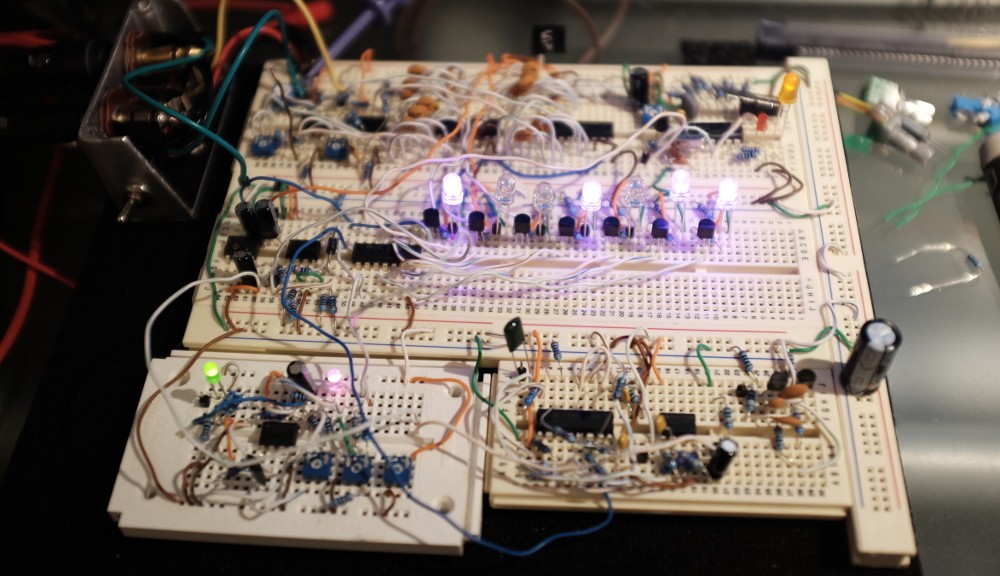I was prototyping a circuit last week, spending many hours sitting in front of the breadboard, consumed in the truly fiddly task of cutting and wire-stripping a lot of tiny wires, managed to get it all together and the first time I fired it up it and plugged it into an amplifier all I could hear was screaming.
Well, as in software sometimes the bugs are an easy fix, particularly if you RTFM. In this case it turned out not to be related to the filter I was building at all — it was the power supply. I’m using a TC1044S charge pump, a tiny bit of magic that converts a positive 9 volt power supply (as used in most guitar pedals) into a negative 9 volt supply: Well, the 1044 uses a 10kHz oscillator to do its magic and I was pretty certain I was hearing one of the harmonics of 10kHz. I tried disconnecting the power to the 1044 and the screaming stopped.
Well, the 1044 uses a 10kHz oscillator to do its magic and I was pretty certain I was hearing one of the harmonics of 10kHz. I tried disconnecting the power to the 1044 and the screaming stopped.
It turns out the engineers that designed this chip had thought that a fixed frequency might be a problem in certain applications, and by connecting the mysteriously named “Boost” pin 1 to V+ it increases the oscillator’s frequency to 45kHz, well beyond the range of human hearing, though apparently not past that of quite a lot of animals, such as the humble hedgehog (45kHz), the rabbit (49kHz), gerbil (60kHz), and bats (115kHz). So the 1044 could be a real irritant if say a hedgehog or a dolphin were the one designing guitar pedals.
Dolphins’ hearing extends all the way into their sonar range (150kHz) which I assume means their hearing is the same as their sonar. Given this is also the same as their vocal range it would seem they could potentially vocalise what they’re “seeing” via sonar, so that rather than saying to their buddy, “look out, here comes a shark!” they could yell out the sonar image of a shark. Dolphin music would be pretty incredible. Maybe it is.
I was a bit surprised to learn that the common house cat has a hearing range up to 77kHz. Mice up to 79kHz. Just what are cats and mice listening to up there? Makes you wonder.
hedgehog image courtesy Wikimedia Commons

